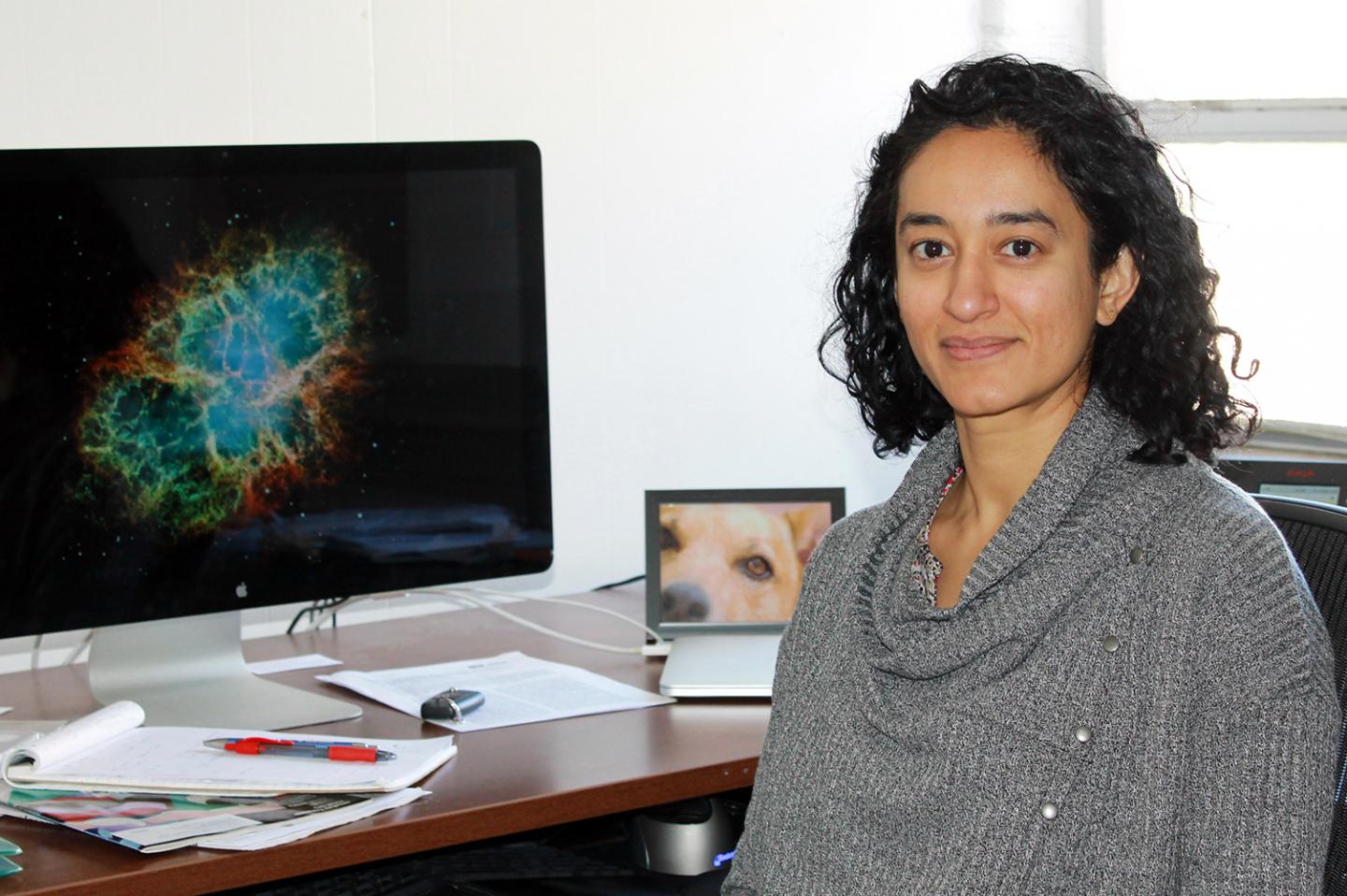
Credit: Virginia Tech
Assistant Professor Bhuvana Srinivasan of the Kevin T. Crofton Department of Aerospace and Ocean Engineering has been selected for a National Science Foundation Faculty Early Career Development (CAREER) program award to study plasma physics in exploding stars.
Plasmas are considered the fourth state of matter, achieved when a gas is heated enough to break apart into ions and electrons.
With the $600,000 CAREER award, Srinivasan will take a first-principles kinetic approach rather than using the commonly applied fluid models to better understand astrophysical phenomena associated with explosions that occur upon the death of large stars. Unlike a fluid approach, a kinetic approach considers the motion of individual particles in gases and plasmas to explain such properties as pressure, temperature, viscosity, and thermal conductivity.
A better understanding of plasma transport, or the exchange of mass, momentum and energy, can impact a variety of areas in science and engineering. The importance of Srinivasan’s research extends beyond astrophysics to terrestrial applications of plasmas, such as nuclear fusion, which has the potential to provide an abundance of clean energy. Novel numerical tools that will be developed as part of this study will be broadly applicable to fundamental science, national security, energy, and spacecraft engineering.
For the past thousand years, observations and documentation have been made about supernovae explosions. Researchers have tried to replicate the conditions and dynamics in laboratory settings. Numerical simulations are critical to further scientific advancement in this area because observations and experiments are severely limited in diagnostic ability and access.
Numerical models in such plasma regimes are also limited, having been unable to fully reproduce the results from experiments and observations. Large amount of computational resources are needed to perform a full scale simulation in order to effectively capture all the relevant spatial and temporal scales in an experiment. Reduced fluid models have traditionally been used in these regimes because they are more accessible computationally, but they have required tunable parameters, which do not have a strong physics basis.
For decades, simulations of astrophysical and laboratory plasmas have relied on simplified fluid models, which have fallen short of accurately capturing physics effects. Srinivasan’s work will seek to address this research shortfall in regards to existing discrepancies between numerical simulations and real world measurements using a novel approach to performing first-principles high-dimensional kinetic calculations.
The missing physics data can notably impact plasma transport, accurate models that are necessary to understand how instabilities develop, how turbulence evolves, and how plasma properties change. Srinivasan’s study will address whether the inconsistencies between experiments and fluid models could be explained using kinetic physics.
By increasing the fidelity of physics models and determining the missing gaps, the research has the potential to significantly advance our understanding of plasma transport with implications in a number of research areas in basic and applied plasma science.
As an educational component of the project, Srinivasan will work through an online user experience to increase the overall understanding of the science of plasma physics in K-12 school children throughout southwestern Virginia. The education and outreach activities will also encourage women and underrepresented groups to pursue science, technology, engineering, and mathematics careers through collaborations with the Center for the Enhancement of Engineering Diversity at Virginia Tech and minority-serving community colleges in Virginia.
###
Media Contact
Lindsey Haugh
[email protected]
Original Source
https:/




